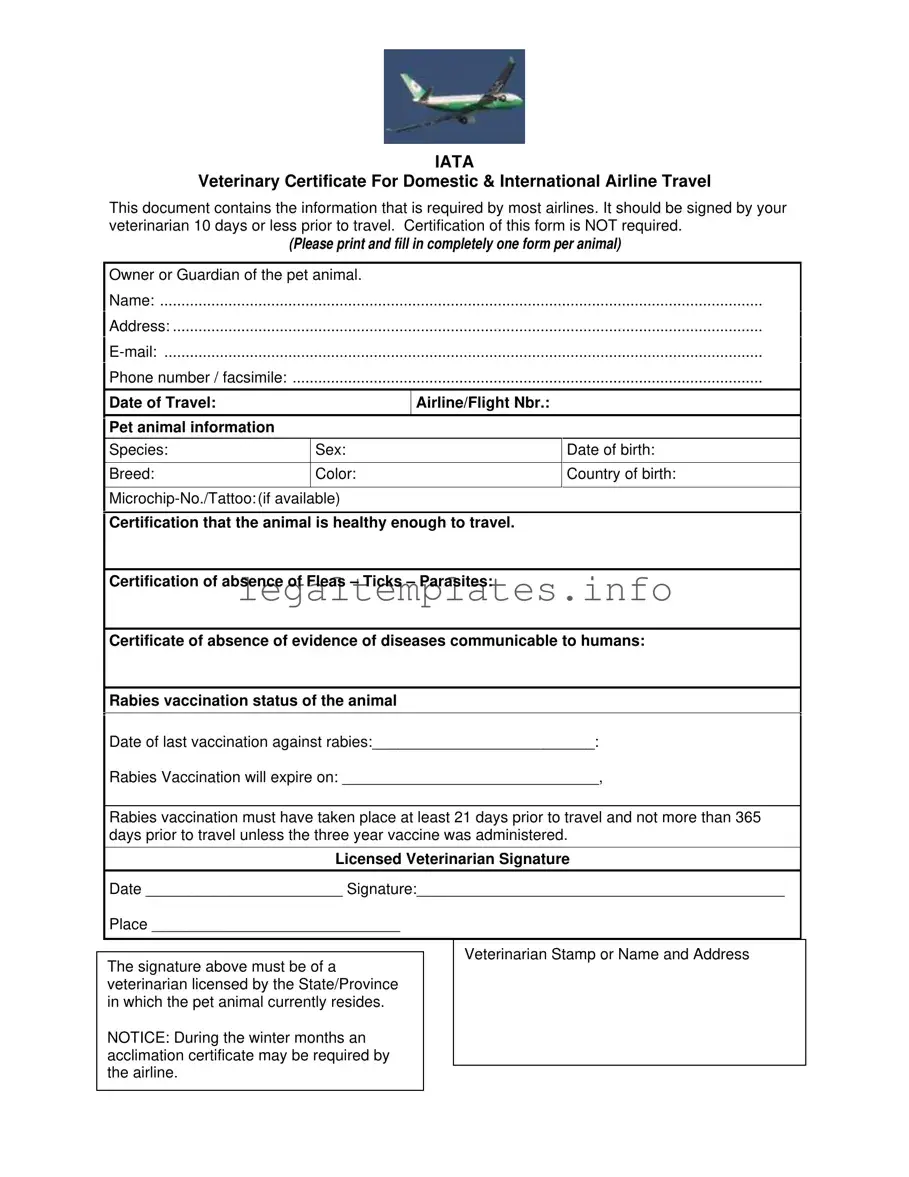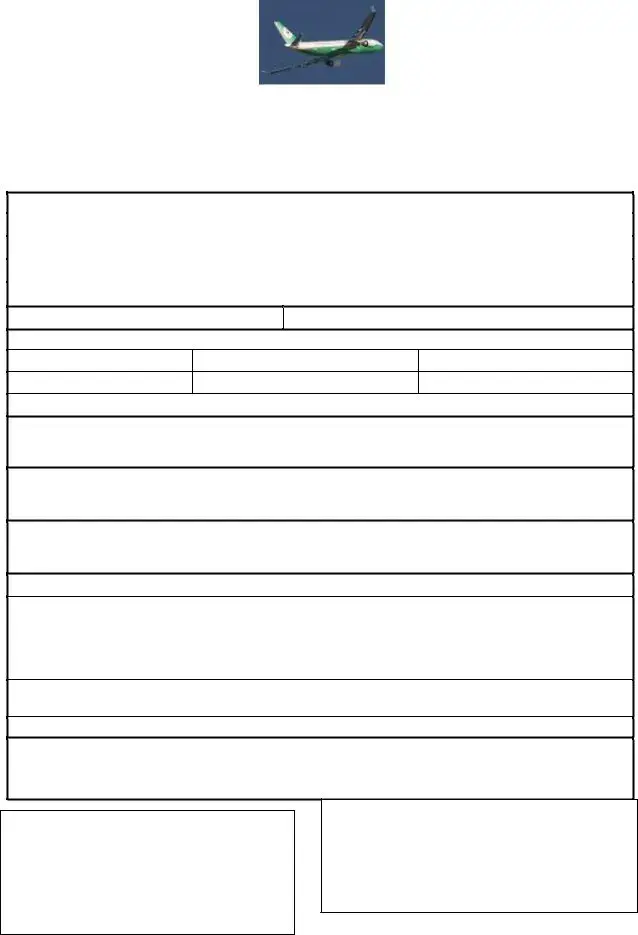The Health Certificate for Pet Travel is closely related to the IATA Veterinary Certificate for Domestic & International Airline Travel, serving a similar purpose but with a broader scope. While the IATA certificate is tailored specifically for air travel, adhering to International Air Transport Association guidelines, a general health certificate might be required for various modes of transport or for pet boarding. Both documents affirm the pet’s health status, include vaccination details, and require a veterinarian's signature, ensuring that the animal is fit for travel or stay.
Animal Passport, particularly within the European Union, parallels the Veterinary Certificate for Travel in essence and function. The Animal Passport is a standardized document that contains a pet’s health and vaccination records, facilitating international travel within the EU. Like the IATA Veterinary Certificate, it includes detailed information on rabies vaccinations, but it also logs other treatments and serves as a permanent health record, unlike the more temporary certificate used specifically for travel.
The Acclimation Certificate is another document that pairs with the Veterinary Certificate for Travel during colder months, as mentioned in the notice. Airlines may require an acclimation certificate to verify that a pet can safely travel in less than optimal temperature conditions, supplementing the information provided in the Veterinary Certificate by specifically addressing the animal's ability to withstand cold temperatures. Both are vital to ensure the animal's wellbeing during air transport.
The Rabies Vaccination Certificate shares some of the elements found in the Veterinary Certificate for Travel, focusing narrowly on the pet’s rabies vaccination status. Whilst the Veterinary Certificate includes a comprehensive health assessment and affirms absence of parasites and diseases communicable to humans, the Rabies Vaccination Certificate is singularly concerned with rabies immunization details, including vaccination date and expiry, crucial for international travel.
A Pet Ownership Certificate, though not directly related to travel, establishes the legal ownership of the animal, which can complement the Veterinary Certificate for Travel. Airlines and countries may require proof of ownership in addition to health and vaccination records, using the information to link the pet to their owner or guardian listed in the travel documents. This ensures responsible pet travel and adherence to regulations.
The USDA APHIS Form 7001, also known as the "United States Interstate and International Certificate of Health Examination for Small Animals," resembles the IATA Veterinary Certificate in its requirement for interstate and international travel, but it is recognized and required for travel outside of airline-specific contexts. While both certify health status and vaccination records, the USDA APHIS form is federal and may be required for travel to certain countries or across state lines in the U.S.
Lastly, Quarantine Forms, required by some destinations for incoming pets, might be considered in tandem with the Veterinary Certificate for Travel. These forms detail the quarantine regulations and the pet’s health status to ensure it does not introduce or spread infectious diseases upon arrival. While serving different phases of travel - pre-departure versus post-arrival - both documents are integral to international pet travel, ensuring health and safety protocols are met.

